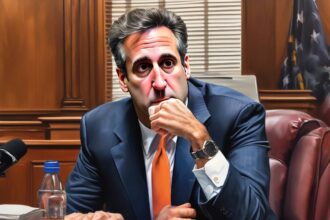Nearly five decades after skeletal remains were discovered in Arizona, authorities have identified the remains as belonging to Vietnam veteran Gerald Francis Long from Minnesota. The remains were initially found by farmers off Meteor City Road east of Flagstaff in 1975, but remained unidentified for over 49 years. Referred to as Munsingwear Doe due to the brand jacket found with the remains, detectives were unable to put a name to the victim until recently with the help of forensic genetic genealogy. By developing a genetic genealogy DNA profile and comparing it with existing profiles in genealogy databases, investigators were able to identify a potential family line and ultimately match Long to the remains.
Gerald Francis Long enlisted in the U.S. Army in January 1969 and was deployed to Vietnam later that year. He returned to Minnesota in February 1972 and was discharged from the Army shortly after. Long was last seen or heard from in October 1972 when he told his family that he was leaving Minnesota for the West Coast. Following the identification of the potential match through genetic genealogy, detectives contacted Long’s surviving family members who confirmed his military service history. Additionally, the FBI Laboratory’s Latent Print Unit was able to compare partial fingerprints collected from the remains in 1975 to Long’s known fingerprint records, resulting in a positive match.
DNA collected from Long’s family further confirmed the match with the remains, bringing closure to the case of Munsingwear Doe. Despite the identification of Gerald Francis Long, the cause of his death in 1975 remains unknown. The Coconino County Sheriff’s Office expressed their deepest condolences to Long’s family, who have requested privacy during this difficult time. The successful identification of the remains highlights the advancements in forensic technology, specifically in genetic genealogy, that have allowed investigators to solve cold cases and bring closure to families decades after the initial discovery of the remains.
The use of genetic genealogy in identifying the remains of Gerald Francis Long underscores the importance of continued advancements in forensic technology in solving cold cases. By developing a genetic genealogy DNA profile and comparing it with existing profiles in genealogy databases, investigators were able to connect Long to his surviving family members and confirm his military service history. The positive match of Long’s fingerprints collected in 1975 with his known fingerprint records further solidified his identity, bringing closure to the case of Munsingwear Doe. The successful identification of Long after nearly five decades demonstrates the dedication of law enforcement agencies in solving cold cases and bringing peace to families who have long awaited answers regarding their missing loved ones.
The journey to identify Gerald Francis Long serves as a reminder of the sacrifices made by veterans like him during the Vietnam War and the importance of honoring their memory. Long’s service in the U.S. Army in Vietnam and his subsequent disappearance after returning to Minnesota in 1972 highlight the challenges faced by many veterans upon their return from war. The discovery of Long’s remains and the eventual identification through forensic genetic genealogy have brought closure to his family, allowing them to finally lay him to rest with the dignity and respect he deserves. The Coconino County Sheriff’s Office and forensic investigators involved in the case have worked tirelessly to solve the mystery of Munsingwear Doe and reunite Long with his family, showcasing the dedication and perseverance required in solving cold cases that have remained unsolved for decades.
The identification of Gerald Francis Long also raises awareness about the importance of preserving and utilizing DNA evidence in solving cold cases and identifying missing persons. The successful match of Long’s DNA with that of his family members highlights the significance of DNA technology in confirming identities and providing closure to families of the missing. As advancements in forensic technology continue to evolve, more cases of unidentified remains may be solved, offering hope to families still searching for their loved ones. The positive outcome of Long’s identification after nearly 50 years underscores the impact of forensic genetics in bringing answers to long-standing mysteries and ensuring that the memories of missing individuals are not forgotten.
Despite the closure brought by the identification of Gerald Francis Long, the cause of his death in 1975 remains unknown, leaving unanswered questions about the circumstances surrounding his disappearance. The mystery of his death serves as a poignant reminder of the unresolved cases that continue to linger in the minds of investigators and families alike. While the identity of Munsingwear Doe has finally been uncovered, the circumstances leading to Long’s death may remain a mystery forever. The Coconino County Sheriff’s Office and forensic investigators involved in the case have extended their condolences to Long’s family, respecting their privacy during this difficult time. The legacy of Gerald Francis Long, a Vietnam veteran whose remains lay unidentified for decades, serves as a testament to the perseverance of law enforcement agencies in solving cold cases and bringing closure to families impacted by loss.









